Where Are My Bitcoins?
Bitcoin Basics: Easy Lessons About How Bitcoin Works

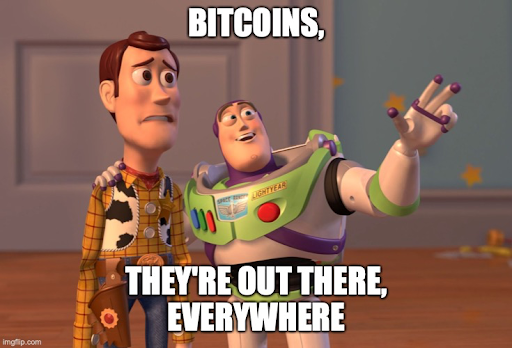
If you own some bitcoin, whether you have taken “self-custody” or whether you have some agent holding your coins for you in their custody, you should be aware that your bitcoin aren’t actually with you or with your agent.
That is by design and that is a good thing. Your bitcoin are perfectly and flawlessly preserved in well over ten thousand locations. And if any one of these locations is damaged, destroyed, erased, tampered with, shut off, sealed off, cut off, or even just ticked off, you’ve got nothing to worry about. Even if that happens to many or most of those locations, you’ve got nothing to worry about. In fact, only one of those locations — any one at all — needs to be intact for your bitcoin to be safe.
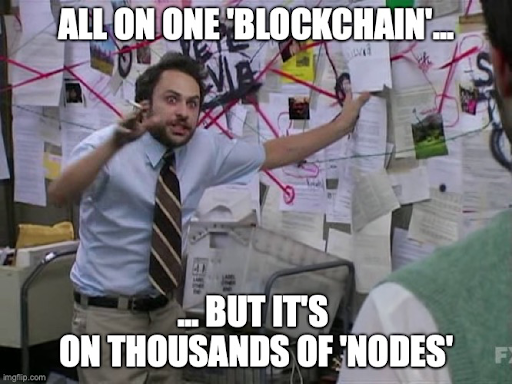
The record, or ledger, of every single portion of every bitcoin is often called the Bitcoin blockchain, and anyone in the world is free to create and maintain an up-to-the-minute correct copy of it. Maintaining a copy of it is called running a bitcoin node. Even you can run a node. It doesn’t take any special skill. You don’t need a license to do it. You can run a Bitcoin node on a pretty ordinary laptop even. Many people do so on a simple computer that doesn’t even need a monitor or keyboard hooked up to it.
To run a node you just install the software and run it. It takes some time to complete the download of the blockchain and it occupies quite a bit of hard disk space if you want to store the whole record. But you actually only need to keep track of bitcoin that haven’t yet been spent, and that itself doesn’t take up very much space at all.
Most of the time that it takes to get a node going isn’t in downloading the data, but in verifying it all. Bitcoin transactions must all be signed with cryptographic digital signatures and must also spend only coins that have not already been spent. Your computer checks that each one of them meets these requirements. It does so for every Bitcoin transaction that has ever taken place on Bitcoin’s blockchain. And that’s quite a bit of work. Each node also checks that every ‘block, ’ or group of transactions, meets the necessary conditions that make those blocks valid.
So if you own some bitcoin, the record of those bitcoin exists in every single node in the world. And if you buy some more bitcoin and send it to a bitcoin address on the bitcoin blockchain, every single node in the whole world will update itself to record that that amount of bitcoin now exists at that address.
So the good news is that your bitcoin are everywhere, safe from destruction. They’re really quite indestructible because of this.
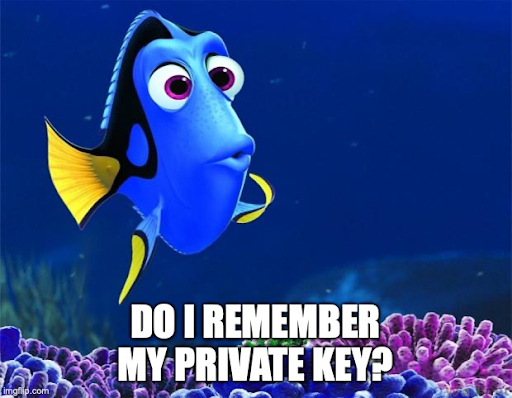
Despite their indestructibility, there is a very important thing you must never ever lose. There is only one way in the world to spend bitcoin. That is by creating a message to spend them containing a cryptographic digital signature that corresponds to the address they are stored at (on the blockchain, on every node in the whole world). And to create such a message, you need to have possession of the private key or keys that can unlock those coins.
Private keys aren’t physical keys — they’re very, very, very, big numbers. But to make them easier to store, there are ways of storing them on physical computing devices or mediums like metal or paper. Bitcoin developers have created ways to store them using words instead of numbers. These words are often called seed phrases.
So while you don’t need to ever worry about where your actual bitcoins are, because they’re safely stored in tens of thousands of places, you do need to worry about where you store your private keys. If you lose your private keys and have no backup, you will not ever be able to spend your bitcoin. You will have lost your proof that you own them. It will not do to say “Look, here’s Joe who sent me the coins and he swears that it was me he sent them to and you can see, by looking at the blockchain, that they haven’t been spent, so please let me spend them.” You could say that, but nobody would be able to help you. Bitcoin’s rules are clear. Nodes look for a valid digital signature to permit spending. If they don’t see a valid digital signature, they don’t allow the transaction. They’re machines after all, not people. You cannot appeal to them with anything but math. So keep personal backups of your private keys.
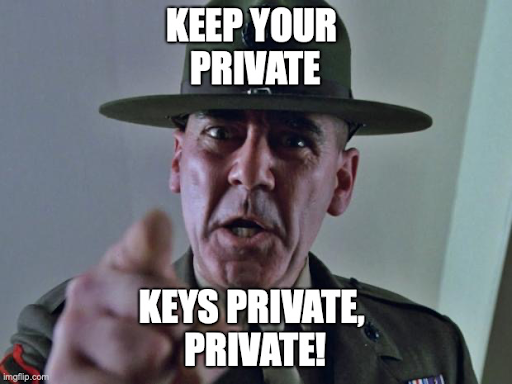
But, just as importantly, you must keep each of those copies of your private keys private. Because anyone who has your private keys can spend your coins. So don’t put your keys in an unencrypted email to yourself, where anyone with access to the mail server can get them. Don’t write them out on a piece of paper that someone else is likely to see or find. Don’t do anything that will let someone else get a hold of your private keys.
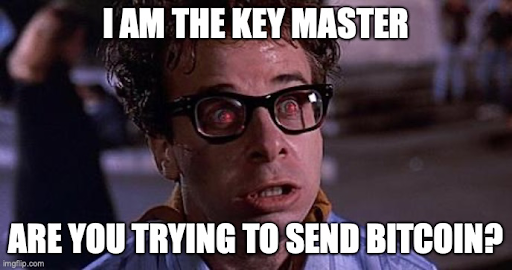
There are special devices, often called ‘hardware wallets, ’ that are very good at storing your private keys securely and protecting them behind passcodes, and that contain other security features to prevent your coins from being lost or stolen. These will also create the digitally signed message you need to spend your bitcoin. And they’ll make it easy for you to create addresses linked to your private keys which you can share with people who are going to be sending bitcoin to you. Hardware wallets are the best solutions for most people to ensure that they don’t lose their keys and that they keep their keys out of the hands of thieves.
Let’s pull it all together into a single sentence:
Your bitcoin are safely copied in thousands of locations all over the world, but your ability to keep and access them requires that you, and you alone, have access to the private keys for them.
This blog offers thoughts and opinions on Bitcoin from the Swan Bitcoin team and friends.
Tomer Strolight is Editor-in-Chief at Swan Bitcoin. He completed bachelors and masters degrees at Toronto’s Schulich School of Business. Tomer spent 25 years operating businesses in digital media and private equity before turning his attention full time to Bitcoin. Tomer wrote the book “Why Bitcoin?” a collection of 27 short articles each explaining a different facet of this revolutionary new monetary system. Tomer also wrote and narrated the short film “Bitcoin Is Generational Wealth”. He has appeared on many Bitcoin podcasts including What Bitcoin Did, The Stephan Livera Podcast, Bitcoin Rapid Fire, Twice Bitten, the Bitcoin Matrix and many more.
More from Swan Signal Blog
Thoughts on Bitcoin from the Swan team and friends.


MSTR vs. GBTC Compared: Which is Best in 2024?

By Drew
This article compares MSTR and GBTC, offering insights for investors by examining their features, benefits, performance, fees, and drawbacks, focusing on their role in Bitcoin investment strategies.


Changing Bitcoin: The Past, The Present, and The Future (Part One)

By Tomer Strolight
For Bitcoin to achieve the lofty goals many have for it, its rules will need to change. This three-part series of articles will tackle what it takes to change Bitcoin.


4 Reasons to Avoid Coinbase In 2024?

By Matt Ruby
The crypto platform is facing all kinds of problems. Is it time for customers to seek out an alternative?